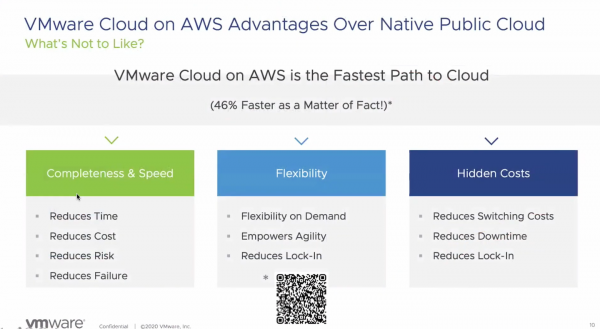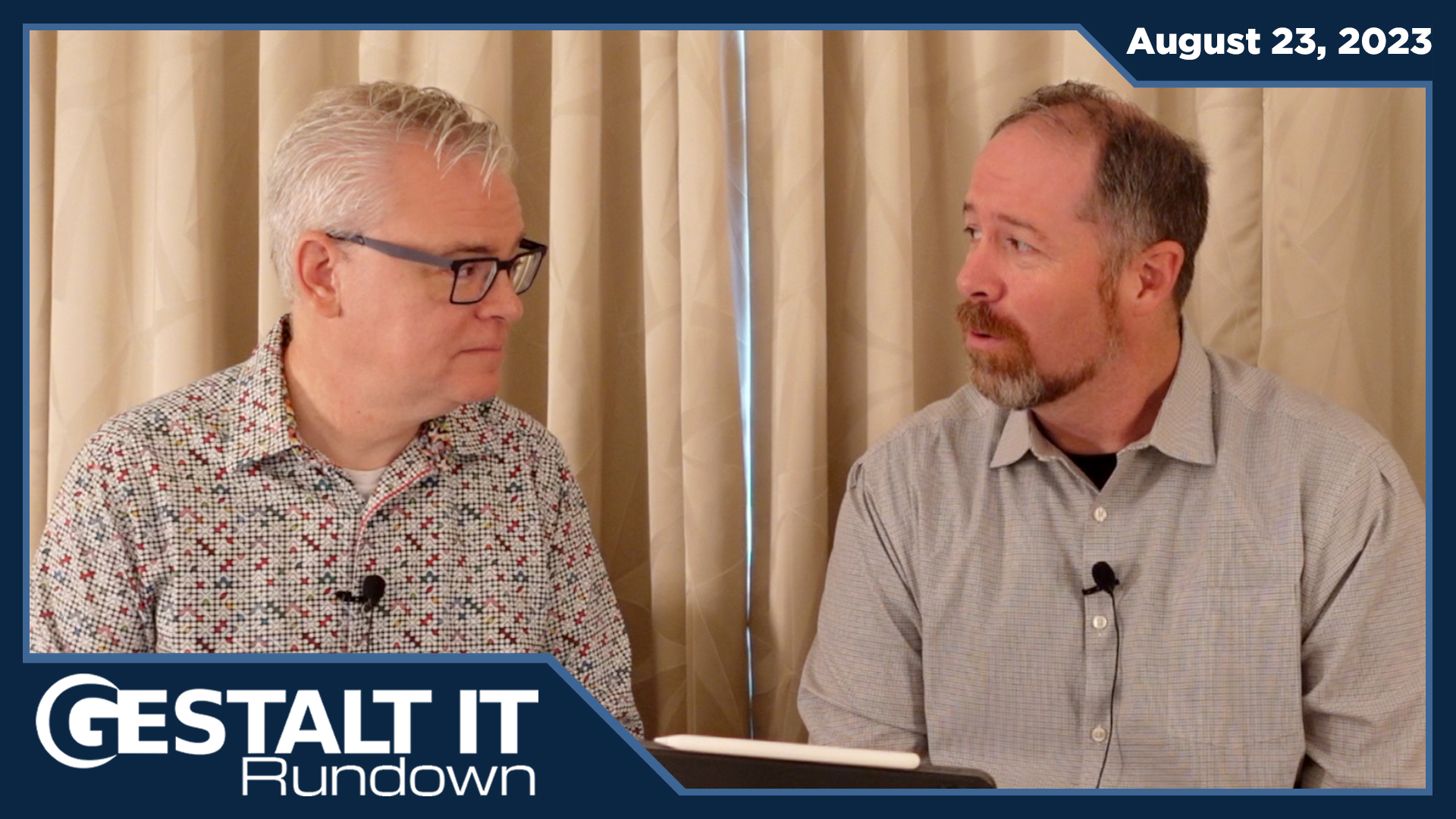When a customer is deciding about moving to the cloud, two factors tend to come up, the price and if the cloud can provide enough application uptime. Does the cost of the cloud make sense? Even if the cost works for the customer, can we keep the application available without redesigning or rewriting it?
VMware realized a gap in cloud adoption for traditional enterprise applications and introduced VMware Cloud on AWS at VMworld 2017. Four years later, VMware has a compelling story around bringing enterprise reliability to the cloud while providing an attractive total cost of ownership. VMware discussed VMware Cloud on AWS at Cloud Field Day in March.
Moving Traditional Applications to the Cloud is Challenging

The idea that it is possible to refactor every application to become cloud-native assumes that the customer owns the code and application development pipeline. While this is likely true for a subset of applications, most enterprises use off-the-shelf, vendor-developed applications for much of their business. These can’t easily be refactored and must migrate via a lift-and-shift methodology.
If a customer is accustomed to maintaining an overprovisioned vSphere environment on-premises, they may be surprised at the sticker shock associated with running their line-of-business applications in the cloud. Once the application is in the cloud, they may find that it isn’t as resilient as it was in their data center. Cloud providers typically expect the application to maintain availability, whereas vSphere on-premises provides high availability at the infrastructure level.
VMware Cloud on AWS Brings On-Premises Economics to the Cloud
VMware Cloud on AWS addresses many of the concerns an enterprise has about migrating to the cloud. There is essentially no retraining needed for an existing VMware team. The product is functionally equivalent to the on-premises version, so all existing skills move with the applications.

Economically, VMware Cloud on AWS provides a set of physical ESXi hosts to power the cloud environment. Cloud IaaS is typically consumed and charged per VM instance, meaning a customer pays for every machine in the application stack. VMware Cloud on AWS is charged per ESXi host, allowing the customer to provision as many VMs as they are comfortable running on their infrastructure.
VMware Cloud on AWS also allows an enterprise to reduce their data center expenses or even get out of the data center business altogether. They let VMware and AWS manage the infrastructure, freeing up their engineers to work on problems that create business value.
Resilient Infrastructure Simplifies High Availability
VMware understands that even if the cost of the platform makes sense, an enterprise customer expects a resilient, highly available platform to run their applications. Cloud vendors provide many options to build availability into an application, but that requires refactoring. VMware vSphere sets a high bar for excellence in maintaining high availability and resilience in the infrastructure. They bring that same attention to availability in VMware Cloud on AWS.
Storage resiliency is the core concept VMware designs around. VMware Cloud on AWS uses vSAN, which places storage inside of the host. The customer gets fine-grained controls using Storage Policy-Based Management. Having the storage inside the host means that a host failure impacts both the compute and storage resources, so the design must account for that data. VMware vSphere HA with Auto Remediation detects a host failure and automatically adds a new host into the impacted cluster, repairing the vSAN cluster and protecting the customer’s data. They use Partition Placement Groups to assure that a cluster never has more than one host in a specific data center rack, preventing top-of-rack switch outages from impacting more than one host in a cluster.
VMware saw enterprise customers hesitate on moving line-of-business and traditional vendor apps to the cloud and reacted by designing a resilient, highly available architecture to provide better than on-premises availability while making the economics of the product appeal to customers who may have had sticker shock on cloud cost with a lift-and-shift into a cloud-native product offering. To learn more about VMware Cloud on AWS, check out their Cloud Field Day presentation.




